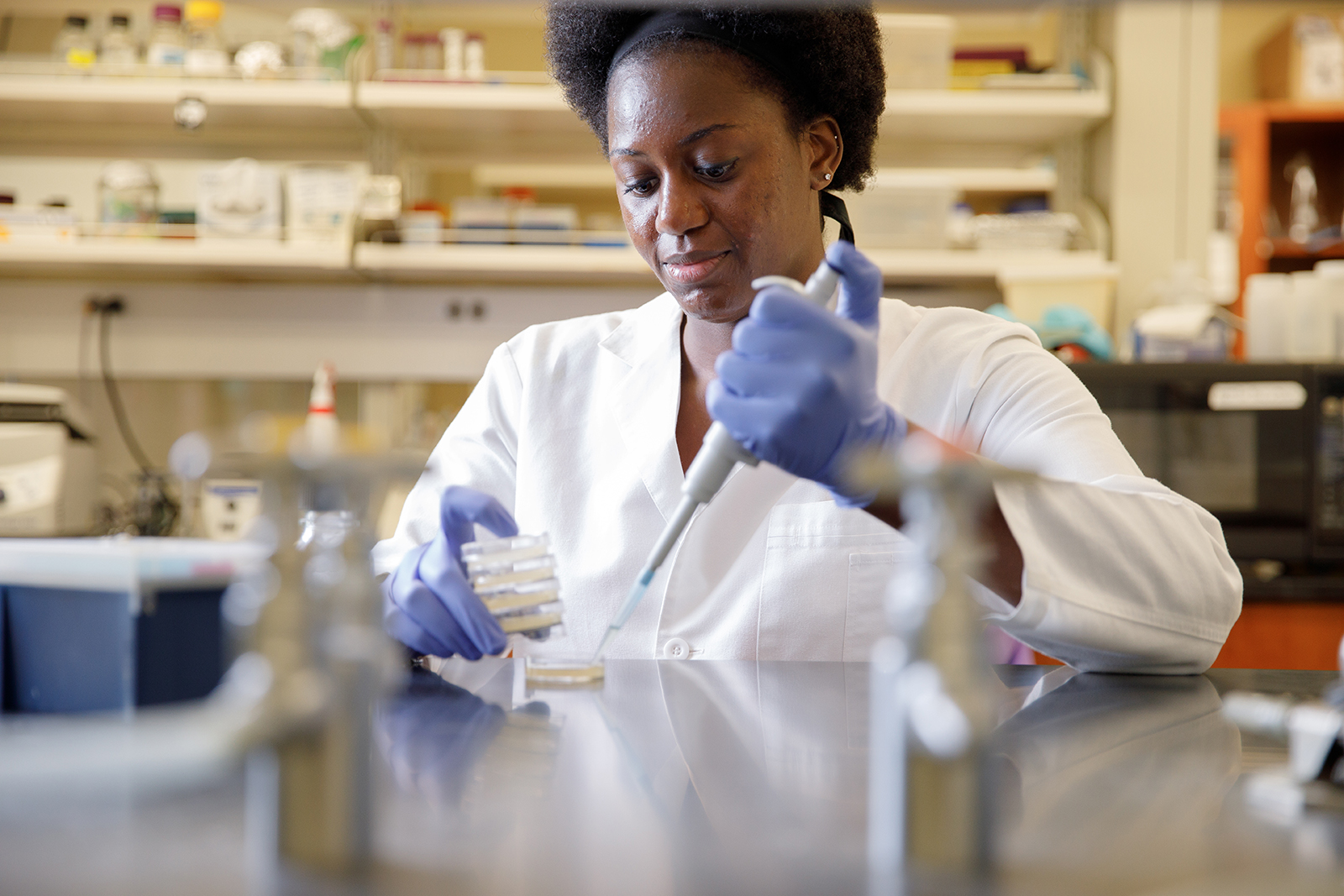Researchers at The University of Alabama were part of a national investigation that identified a new candidate therapeutic target for Parkinson’s Disease, according to recently published results.
The discovery is part of a movement within the biological and medical research communities to find promising avenues to treatment after decades of frustration in finding a way to prevent or halt the disease that affects more than 10 million people globally with more than 60,000 Americans diagnosed annually.
In the lab of Drs. Guy and Kim Caldwell at UA, researchers work with tiny roundworms known as C. elegans, which share roughly half their genes with humans. The worm’s basic features allow inexpensive and rapid experimentation for a range of neurological diseases, and UA researchers can induce Parkinson’s-like effects in the worm for testing of new drug candidates. Notably, prior findings using this UA worm model have repeatedly led to results later validated in human research.
“Our lab at UA has been at the forefront in the identification of new cellular pathways and molecular targets for Parkinson’s disease,” said Dr. Guy Caldwell, University Distinguished Research Professor in biological sciences. “What we have repeatedly seen is that factors we discovered in C. elegans as affecting neurodegeneration not only translate to mammals and humans, but can often predate their discovery as being important to disease mechanism in patients.”
The investigation was led by Dr. Saranna Fanning, assistant professor, neurology, and Dr. Dennis Selkoe, physician and co-director of the Center for Neurologic Diseases, at Brigham and Women’s Hospital at Harvard Medical School. Work on the project at UA was led by Jennie Thies, a doctoral student advised by Dr. Kim Caldwell, professor of biological sciences.
“Working with Drs. Selkoe and Fanning at Harvard to advance the path to a cure has been exciting and our shared sense of urgency to halt neurodegenerative disease has proven synergistically inspiring,” Dr. Guy Caldwell said.
Current therapies for Parkinson’s disease, a neurodegenerative disorder, include treating the symptoms of the disease such as tremor and involuntary shakes, but there is no cure or treatment to halt the disease’s progression.
Hallmarks of Parkinson’s disease are the loss of cells, or neurons, that send information to other parts of the brain, specifically neurons that produce a type of chemical known as dopamine, along with the accumulation, or clumping, of proteins in the neurons. When a Parkinson’s patient begins to exhibit symptoms of the disease, they have likely lost up to 80 percent of the dopamine neurons in their bodies.

To work, proteins must fold properly within cells. When extra copies or mutations of the protein alpha-synuclein are present in dopamine-producing neurons, a series of structural misfolding events can occur as we age, leading to aggregation of proteins. Such protein aggregation within the brain’s dopamine-producing neurons can lead to their malfunction or cell death, triggering the symptoms of Parkinson’s.
Alpha-synuclein is known to interact with and alter the balance of lipids and fatty acids that contribute to many important cellular processes that can be disrupted by aggregated forms of alpha-synuclein. Researchers at Brigham and Harvard Medical School are exploring how to circumvent the aggregation issue directly and rebalance lipid and fatty acid metabolism in the brain as a new strategy to therapeutic approaches for Parkinson’s disease and related conditions.
Their previous work led to the identification of an inhibitor of an enzyme called stearoyl-CoA-desaturase, now being tested in human clinical trials.
In the new study that involved UA, the team identified an enzyme in fatty acid production as a new target to reduce alpha-synuclein neurotoxicity. Inhibiting LIPE, a lipase that degrades triglycerides to produce fatty acids, reduced the formation of alpha-synuclein inclusions and other characteristics associated with Parkinson’s in patient-derived neurons. LIPE reduction also alleviated neurodegeneration in the UA team’s C. elegans model of alpha-synuclein toxicity, according to the findings outlined in “npj Parkinson’s Disease,” a Nature academic journal devoted to the disease.
“Collaborating with Kim Caldwell, Guy Caldwell and Jennifer Thies is the epitome for productive, multi-disciplinary, scientific collaboration. Their C. elegans dopaminergic neuron degeneration model provided significant data in determining the in vivo potential for LIPE as a candidate therapeutic target for Parkinson’s disease,” Fanning said.
Contact
Adam Jones, UA communications, 205-348-4328, adam.jones@ua.edu
